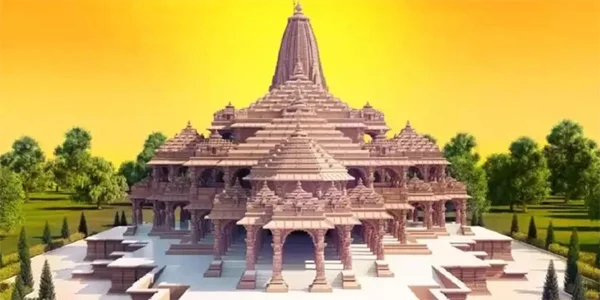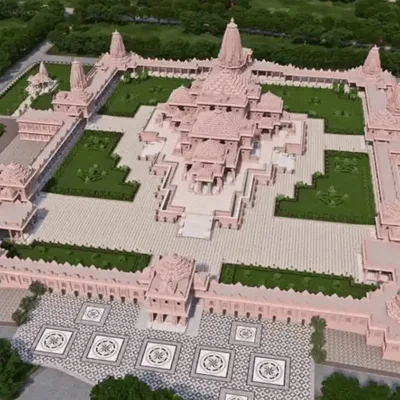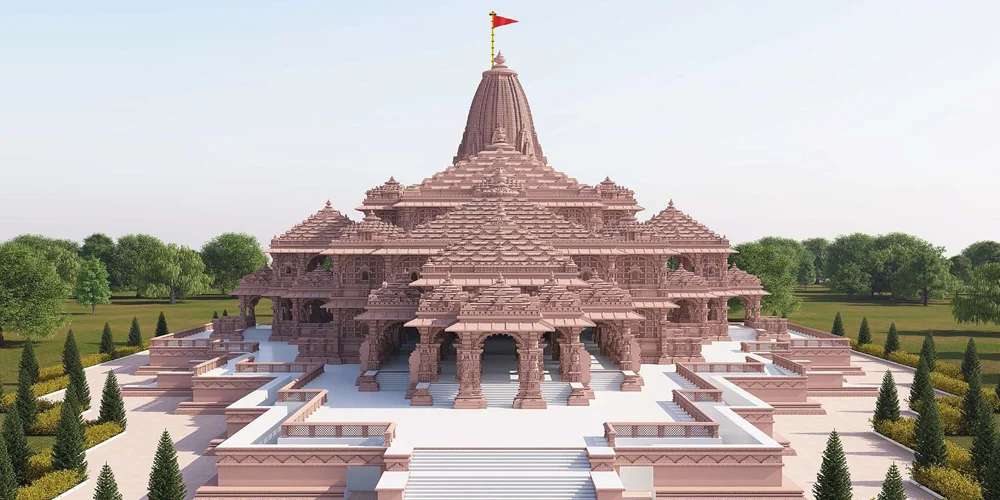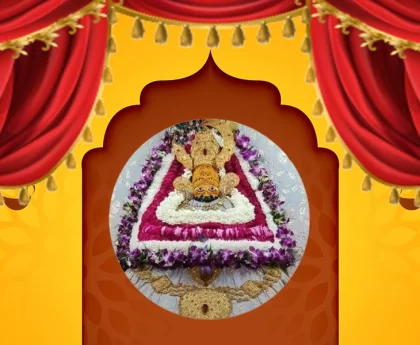Ram Mandir Ayodhya, India, holds profound significance in the country’s cultural and religious landscape. Rooted in ancient history, Ayodhya is believed to be the birthplace of Lord Rama, a revered figure in Hinduism. The construction of the Babri Masjid in 1528 on the disputed site heightened tensions over the centuries, leading to a long-standing legal dispute. The turning point came in 1992 when the Babri Masjid was demolished by Hindu activists, triggering widespread communal tensions. After years of legal proceedings, the Supreme Court of India, in a historic verdict in November 2019, awarded the disputed site to Hindus for the construction of the Ram Mandir. The groundbreaking ceremony, led by Prime Minister Narendra Modi on August 5, 2020, marked the commencement of construction. The Ram Mandir stands as a symbol of cultural resurgence and religious harmony, reflecting the aspirations and beliefs of millions of people. Its construction signifies not only the fulfillment of a longstanding demand but also a moment of unity, celebrating the rich heritage and traditions of Ayodhya.
Significance of Ram Mandir Ayodhya
The Ram Mandir in Ayodhya holds immense significance in the cultural, historical, and religious context of India.
Here are several aspects that highlight its importance:
Religious Beliefs:
- Ayodhya is considered the birthplace of Lord Rama, a central figure in Hinduism and the protagonist of the epic Ramayana. The construction of the Ram Mandir at this sacred site is seen as the fulfillment of a longstanding religious aspiration for millions of Hindus.
Cultural Heritage:
- The Ram Mandir is not only a place of worship but also a symbol of India’s rich cultural heritage. It connects the present generation with ancient traditions, mythology, and the historical roots of Ayodhya.
Unity and Harmony:
- The construction of the Ram Mandir is viewed as a symbol of unity and harmony, as it signifies the resolution of a longstanding dispute. The Supreme Court’s verdict in 2019 aimed at fostering communal harmony and resolving the Ayodhya issue through legal means.
National Integration:
- The construction of the Ram Mandir is seen as a unifying force for the diverse communities in India. It represents an opportunity for people of different backgrounds to come together in celebration of a shared cultural and religious heritage.
Tourism and Economy:
- The Ram Mandir is expected to attract pilgrims and tourists from around the world, contributing to the local economy of Ayodhya and creating opportunities for cultural and religious tourism.
Symbol of Faith and Devotion:
- For millions of devotees, the Ram Mandir is not just a physical structure but a living embodiment of faith and devotion. Pilgrims are expected to visit the temple to seek blessings, participate in religious ceremonies, and deepen their connection to the divine.
Historical Resolution:
- The construction of the Ram Mandir marks the resolution of a contentious historical issue that had been a source of tension for decades. The peaceful construction process reflects India’s commitment to resolving complex issues through legal and democratic means.
Architectural Marvel:
- The design and architecture of the Ram Mandir are expected to showcase a blend of traditional and modern elements. It has the potential to become an architectural marvel that reflects the grandeur and spirituality associated with Hindu temples.
In summary, the Ram Mandir in Ayodhya holds multifaceted significance, encompassing religious beliefs, cultural heritage, national integration, economic development, and the resolution of a historical dispute. It stands as a testament to the diverse and inclusive fabric of India.

Facts of Ram Mandir Ayodhya
Historical Ayodhya:
- Ayodhya, believed to be the birthplace of Lord Rama, is an ancient city with a rich history and cultural heritage.
Babri Masjid Demolition (1992):
- The Babri Masjid, which stood on the disputed site, was demolished on December 6, 1992, by a large gathering of Hindu activists, leading to widespread communal tensions.
Legal Dispute:
- The Babri Masjid-Ram Janmabhoomi dispute became a long-standing legal issue, with multiple legal battles over the ownership of the disputed land.
Supreme Court Verdict (2019):
- In November 2019, the Supreme Court of India delivered a historic verdict, granting the disputed site to Hindus for the construction of the Ram Mandir.
Groundbreaking Ceremony (2020):
- The groundbreaking ceremony for the Ram Mandir took place on August 5, 2020, with Prime Minister Narendra Modi performing the Bhoomi Pujan.
Architectural Plans:
- The design of the Ram Mandir is expected to be a harmonious blend of traditional and modern architectural elements, reflecting the cultural and spiritual essence of Hindu temples.
Construction Commencement:
- Following the groundbreaking ceremony, the construction of the Ram Mandir has been underway, symbolizing the realization of a longstanding demand.
Religious Significance:
- The Ram Mandir is considered a sacred pilgrimage site for Hindus, attracting devotees who seek blessings and spiritual fulfillment.
Cultural Revival:
- The construction of the Ram Mandir is seen as a cultural revival, reconnecting present generations with ancient traditions, mythology, and the historical roots of Ayodhya.
Tourism Potential:
- The Ram Mandir is expected to become a significant tourist attraction, drawing pilgrims and tourists from around the world and contributing to the local economy of Ayodhya.
Symbol of Unity:
- The construction of the Ram Mandir is viewed as a symbol of unity and national integration, fostering communal harmony and resolving a longstanding historical issue.
Peaceful Construction Process:
- The construction of the Ram Mandir has been characterized by a peaceful process, showcasing India’s commitment to resolving complex issues through legal and democratic means.
Cultural and Religious Celebrations:
- The construction and inauguration of the Ram Mandir are expected to be marked by elaborate cultural and religious celebrations, reflecting the significance of the event in the Hindu community.
Global Attention:
- The Ram Mandir project has garnered global attention as it represents not only a religious and cultural milestone but also a demonstration of India’s commitment to pluralism and diversity.
These facts encapsulate the multifaceted nature of the Ram Mandir in Ayodhya, encompassing historical, legal, cultural, religious, and socio-economic dimensions.

Darshan Timings of Ram Mandir Ayodhya?
- Darshan at the Ayodhya Ram Mandir from 7:00 am to 11:30 am and from 2:00 pm to 7:00 pm.
Aarti Timings of Ram Mandir Ayodhya?
- The Ram Mandir Aarti is three times a day, Participate at 6:30 am for Jagaran or Shringar Aarti, 12:00 pm for Bhog Aarti, and 7:30 pm for Sandhya Aarti. To attend the Aarti, individuals need a pass issued by the trust, for which a valid ID proof must be presented.
Who solved Ram Mandir issue?
- The Ram Mandir issue in Ayodhya, India, was resolved through a legal process that culminated in a landmark verdict by the Supreme Court of India. The case involved a long-standing dispute over the ownership of the land where the Babri Masjid stood before its demolition in 1992. The dispute centered around whether a Hindu temple dedicated to Lord Rama, known as the Ram Mandir, existed at the site prior to the construction of the Babri Masjid.
- The resolution came with the Supreme Court’s verdict on November 9, 2019. The court ruled in favor of the construction of a Ram Mandir at the disputed site and directed the government to allocate an alternative piece of land for the construction of a mosque. The unanimous decision aimed at bringing closure to a contentious issue that had been a source of religious and social tensions for decades.
It’s important to note that the resolution was achieved through a legal process, with the Supreme Court playing a crucial role in adjudicating the matter and providing a verdict based on evidence and legal principles. The verdict was seen as an effort to promote communal harmony and uphold the rule of law in the context of a deeply sensitive and historically significant issue.





